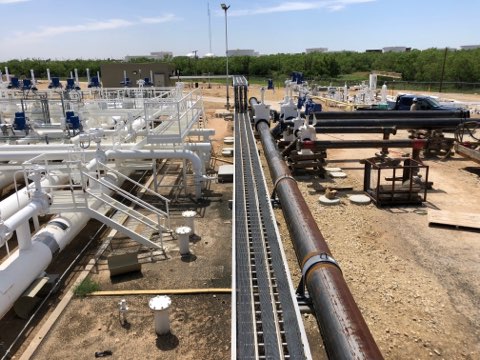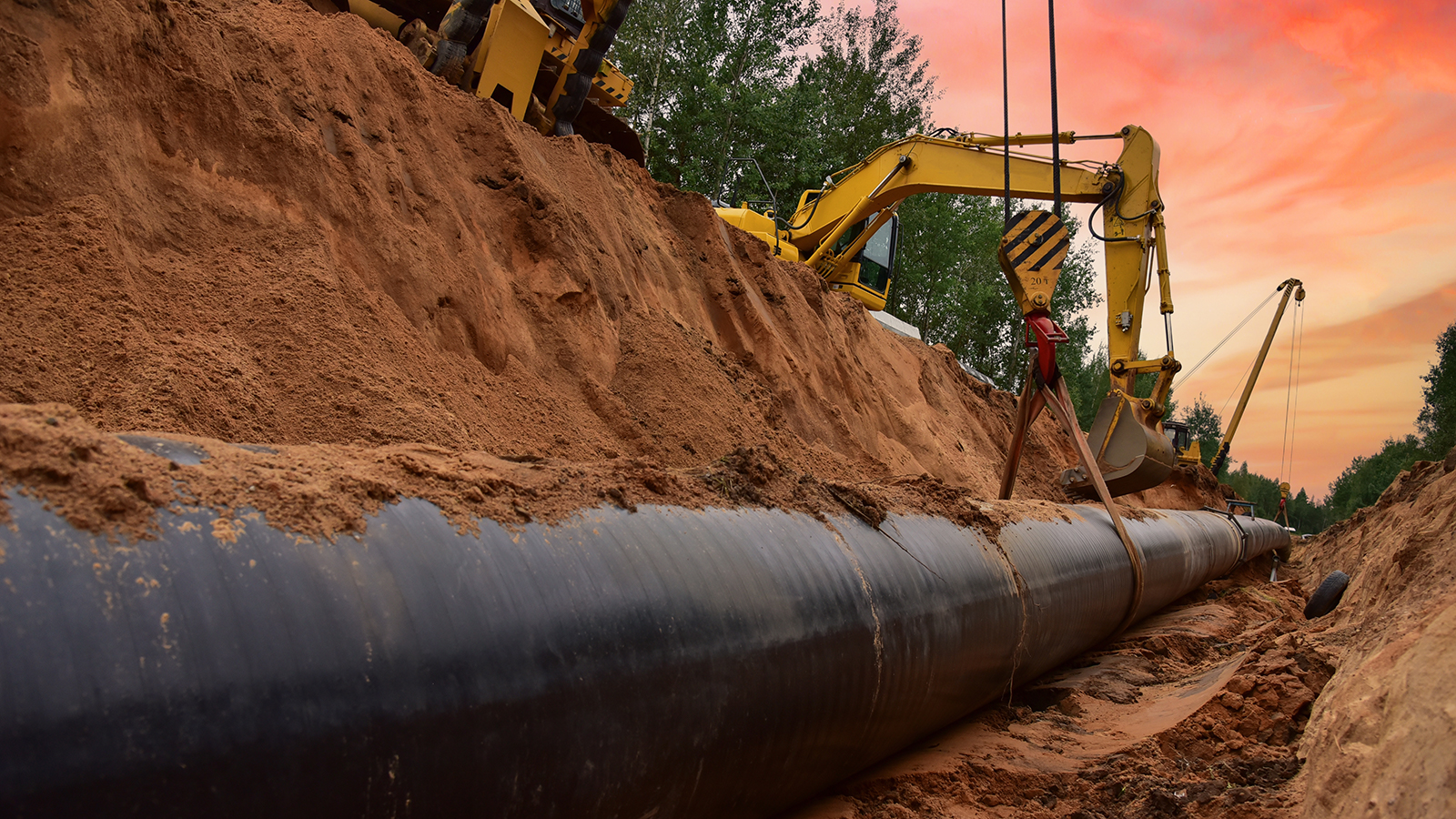Why Engineers Trust Creek Pipe Midland for High-Performance Pipeline Materials
Wiki Article
Revealing the Latest Technologies in Pipelines for Efficient Water Management
The development of pipe technology is reshaping water monitoring methods. Current innovations, especially in smart sensing unit technology and leakage discovery systems, assure improved performance and sustainability. These improvements allow real-time surveillance and anticipating maintenance, dealing with vital water challenges. As communities undertaking for resilience, the role of environmentally friendly materials becomes significantly considerable - Creek Pipe Midland. What other innovations are on the horizon that could even more transform our method to water source administration?Improvements in Smart Sensor Technology
As water monitoring systems end up being significantly complex, improvements in smart sensing unit modern technology play a crucial duty in improving effectiveness and sustainability. These sensing units allow real-time tracking of water quality, flow rates, and pressure degrees, giving essential data for reliable management. By incorporating Net of Things (IoT) abilities, smart sensors facilitate remote access and information analytics, enabling operators to make educated choices swiftly.Moreover, predictive upkeep ends up being feasible through making use of sophisticated formulas that assess sensing unit data to forecast prospective failures prior to they take place. This aggressive strategy minimizes downtime and minimizes repair prices. Additionally, wise sensors add to the preservation of water resources by identifying leaks and irregularities in the system, guaranteeing timely activity is required to minimize waste. Generally, the implementation of smart sensing unit modern technology in water administration pipelines notes a significant step in the direction of enhancing source usage and advertising ecological sustainability.Eco-Friendly Products for Lasting Pipes
Ingenious strategies in water administration pipes progressively incorporate environmentally friendly materials to improve sustainability. These materials goal to minimize environmental influence while keeping resilience and performance. Biodegradable plastics, for instance, are getting grip as sensible alternatives to standard PVC, minimizing long-lasting waste in land fills. In addition, recycled products, such as redeemed rubber and metal composites, are being utilized to create durable pipeline systems that significantly reduced carbon footprints.Moreover, bio-based materials derived from sustainable sources are arising as promising alternatives, providing both resilience and decreased dependence on fossil gas. Suppliers are likewise discovering ingenious finishings that improve rust resistance while staying ecologically benign. These developments not only promote a circular economic situation however additionally straighten with worldwide sustainability objectives. As water deficiency ends up being a pressing concern, the adoption of eco-friendly products in pipeline building and construction stands for a critical step towards accountable water administration and source conservation.
Real-Time Tracking and Data Analytics
While standard water management systems frequently rely upon routine assessments, the combination of real-time surveillance and information analytics has actually transformed the landscape of pipe management. This innovative approach makes it possible for drivers to constantly track water circulation, pressure, and high quality, promoting prompt actions to potential problems - Creek Pipe Company LLC. By leveraging advanced sensors and IoT technology, data is accumulated and assessed instantly, giving actionable insights that boost decision-making processes.Real-time analytics not just enhances functional efficiency yet additionally aids in resource appropriation, making certain that water circulation is maximized. Predictive analytics can forecast demand patterns, enabling for aggressive procedures to be applied, therefore minimizing waste and enhancing sustainability efforts. The capability to visualize data via control panels aids in recognizing abnormalities and trends, which is vital for maintaining the integrity of water supply systems. Consequently, this shift in the direction of real-time monitoring represents a considerable innovation in guaranteeing the efficiency and sustainability of water monitoring pipesAdvancements in Leakage Discovery Equipments
The surge of real-time surveillance has actually led the way for improvements in leak discovery systems within water administration pipes. Modern innovations, consisting of acoustic sensing units and fiber optic cables, make it possible for drivers to identify leaks with unmatched precision. Acoustic sensors, for instance, identify sound waves created by getting away water, permitting instant area pinpointing. On the other hand, fiber optic systems utilize temperature modifications along the pipeline to reveal anomalies a sign of leaks.Additionally, machine learning formulas are being used to evaluate information gathered from these sensors, improving predictive upkeep abilities. By processing historical data and recognizing patterns, these systems can forecast potential leakage places before they occur, reducing water loss and reducing repair service costs.Furthermore, integration with geographical info systems (GIS) enables much better visualization and management of pipeline networks, improving the response to detected leaks. Jointly, these technologies signify a transformative change in how water monitoring systems resolve leak detection.Boosted Sturdiness and Longevity of Pipe Products
Innovations in pipeline products are considerably improving the longevity and long life of water management systems. Innovative materials, such as high-density polyethylene (HDPE) and reinforced concrete, are proving to be more immune to deterioration, stress, and environmental stressors. These modern materials not just prolong the life expectancy of pipes but also lower maintenance expenses and the regularity of repairs.Additionally, advancements in composite products, which integrate different substances to enhance efficiency, are being utilized for their superior strength-to-weight proportion and adaptability. This enables pipelines to better withstand severe climate condition and ground movements.Moreover, the introduction of safety layers better improves the durability of pipelines versus chemical destruction and physical wear. Therefore, water monitoring systems are becoming extra reliable and lasting, guaranteeing the effective distribution of water sources while minimizing the ecological impact connected with frequent pipeline substitutes.Assimilation of IoT in Water Circulation Networks
As water distribution networks evolve, the assimilation of the Web of Things (IoT) is changing the means water sources are taken care of and kept an eye on. Smart sensing units and linked devices enable real-time data collection on water flow, quality, and stress, assisting in positive administration of infrastructure. This innovation permits immediate discovery of abnormalities and leaks, minimizing water loss and decreasing operational costs.Furthermore, IoT modern technology supports predictive maintenance by analyzing usage patterns, which aids energies prepare repair services and upgrades extra successfully. Boosted communication in between tools warranties seamless information transmission, permitting boosted decision-making based upon exact, up-to-date information.Additionally, the assimilation of IoT cultivates water conservation efforts by giving customers with insights right into their usage practices, Creek Pipe Pipeline Construction encouraging more responsible usage. Generally, the IoT revolutionizes water circulation networks, promoting efficiency and sustainability in water administration practices.Instance Researches: Success Stories in Water Monitoring Solutions
Various communities and organizations have successfully applied ingenious water administration services, showcasing the effectiveness of modern-day technologies in dealing with water scarcity and circulation challenges. One noteworthy example is the city of San Diego, which incorporated advanced metering framework (AMI) to keep an eye on water use in real-time, leading to a 10% decrease in usage. Creek Pipe Midland. The water authority in Cape Town adopted a smart leakage discovery system that identified and repaired leaks rapidly, considerably lessening water loss throughout the extreme dry spell of 2017. In Australia, making use of recycled water systems in urban areas has confirmed successful, permitting sustainable watering methods and decreased demand on drinkable water sources. These study illustrate that by leveraging modern technology and innovative approaches, neighborhoods can improve their water management strategies, guaranteeing lasting sustainability and resilience when faced with growing water obstaclesRegularly Asked Inquiries
How Do These Advancements Effect Water Energy Expenses?
The developments in pipe technology considerably decrease water loss and operational inefficiencies. Water energies experience lowered upkeep and manufacturing prices, ultimately leading to lower costs for customers and improved sustainability in water monitoring methods.What Are the Ecological Influences of Pipe Installation?
The environmental effects of pipe installment can consist of environment disruption, soil disintegration, and possible water contamination. Modern strategies intend to alleviate these effects, promoting sustainable practices in building and construction and lasting eco-friendly preservation.
Are There Government Laws Affecting Pipe Innovations?

Government laws significantly affect pipeline developments, mandating conformity with environmental requirements and safety procedures. These guidelines intend to reduce eco-friendly threats while promoting improvements in innovation, ultimately forming the future of pipeline infrastructure and water monitoring practices.

How Can Consumers Take Advantage Of These Pipeline Improvements?
Customers can benefit from these pipeline innovations with enhanced water high quality, reduced prices, boosted dependability, and increased accessibility to tidy water. Developments result in extra efficient source management, eventually fostering sustainable methods within neighborhoods.What Future Trends Can We Expect in Water Administration Pipelines?
Future patterns in water monitoring pipelines may consist of raised automation, smart surveillance technologies, and sustainable materials. These innovations intend to improve performance, minimize leakages, and improve total water high quality, making sure source preservation for future generations. As water distribution networks develop, the combination of the Web of Things (IoT) is transforming the means water sources are managed and kept track of. Numerous communities and companies have actually successfully executed innovative water management remedies, showcasing the effectiveness of contemporary technologies in addressing water shortage and distribution challenges. The water authority in Cape Town adopted a wise leak detection system that identified and fixed leakages rapidly, substantially minimizing water loss during the serious dry spell of 2017. In Australia, the use of recycled water systems in metropolitan locations has confirmed successful, allowing for lasting irrigation practices and lowered demand on safe and clean water resources. Consumers can profit from these pipeline advancements through boosted water quality, decreased costs, enhanced reliability, and increased access to tidy water.Report this wiki page